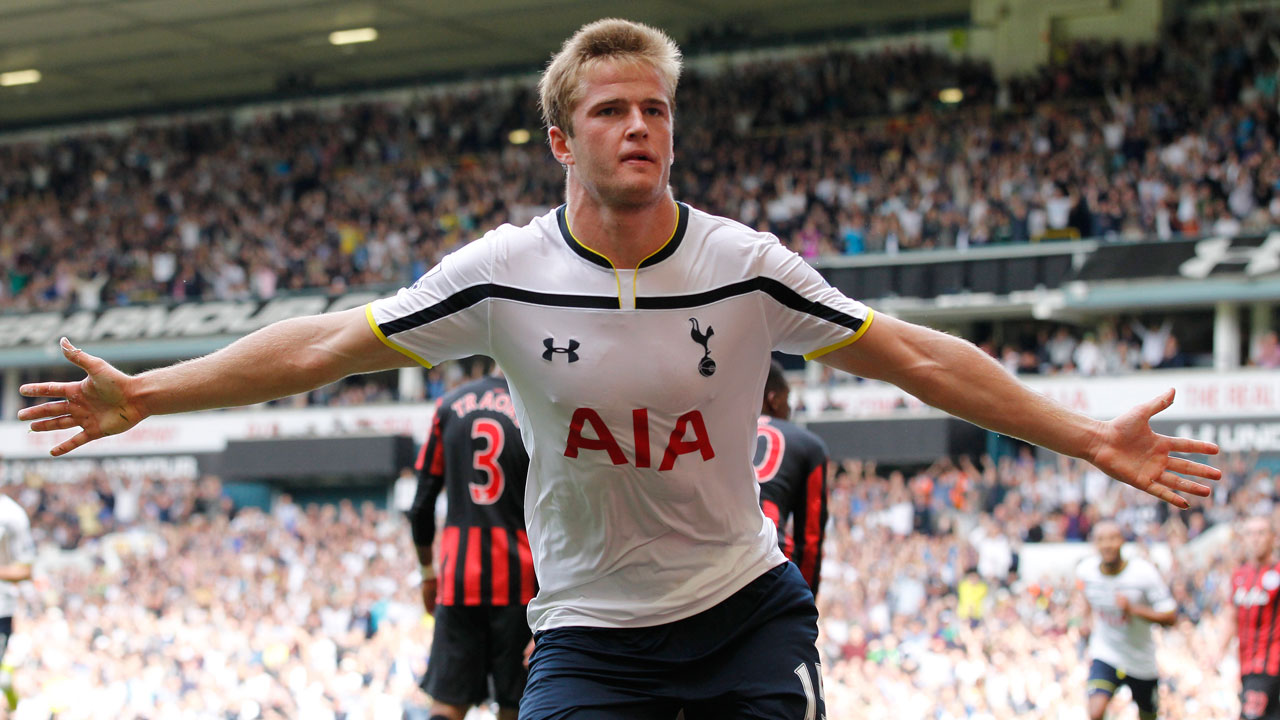Mauricio Pochettino and Tottenham are putting together a stylistically interesting season, a harmony between efficiency and reactive dynamism.
Much has been made of the implementation of Pochettino’s style through identity and how it has never completely clicked in for Spurs since his arrival in 2014. Through the first 12 games of the Premier League campaign, although an admittedly small sample size, the ideologies of the manager are manifesting in complete performances, and only one loss.
Let’s read into the connection between Tottenham’s implemented system and the analytics derived from their performances in the Premier League this season thus far.
Arguably the fulcrum of Tottenham’s success has come from the introduction of their young and robust midfield pairing of Eric Dier and Dele Alli—both standing at 1.88 metres and under 22 years old. The pair make it incredibly difficult for the opposition to pass through Tottenham’s spine and tend to defensively dominate their territory—Spurs concede 152.1 completed passes in the neutral zone (middle third of the pitch), the third least in the league.
Although the side’s passing ratios are not stellar, especially in dangerous areas (52.7 percent possession, 50.9 percent passing in final 1/3), their midfield makes it incredibly difficult for the opposition to maintain the ball and a central territorial presence—Pochettino’s style is classically not predicated on a possessive edge.
As Tottenham presses high up the pitch to pressure the opposition into turnovers in dangerous areas, the players are tasked with a heavy load of physical work. To offset this systemic burden, Pochettino has installed two ball-playing central defenders, who are both incredibly comfortable in possession. The pair of Toby Alderweireld and Jan Vertonghen is one of three central defender pairings in the Premier League in which both players average over 51 p/90 (passes per 90 minutes). As a unit, Tottenham averages the second most completed passes in their defensive third (79.8 p/90), thus allowing their forward six to rest in deep possession.
‘A Zone w/ Ball’ (% of time in possession spent in attacking zone) related to ‘SoT F Close’ (shots on target for in game states +1 goal, even, or -1 goal)
Tottenham’s attack is predicated on effective, vertical ball movement often stemming from gaining possession deep in their opponent’s defensive half through forced errors. They only spend 23.8 percent of their time in possession in their opponent’s final third (16th in the Premier League), but have the second most shots on target (75 SoT) and the third most expected goals (18.7 xG)—according to Michael Caley’s xG algorithm.
We can start to stir these defensive and offensive points with the fact that Tottenham, as a side, has the second most tackles and interceptions in the Premier League (325), although usually a watery statistic, and get a pretty good idea of a club effectively engaging their manager’s vision of a system.
As Harry Kane has returned to his scoring ways, his SoT and xG numbers through the beginning of the season always suggested this rekindling. What has been slightly surprising is Erik Lamela’s underlying, offensive contribution totals as compared to last season’s. He has produced an increase of 3.6 percent in ‘Contribution to Shots %’—a measure of a player’s contribution to the team’s shot output via shots and key passes—and more significantly a 7.1 percent increase in ‘Contribution to Goals %’—a measure of a player’s contribution to the team’s goal output via assists and goals.
Along with his dogged defensive motor in the neutral and final thirds, his offensive contribution is improving.
Although 12 games are certainly not enough to totally measure a player’s contribution, proportions at this stage can be noted and tracked for further comparison.
Tottenham has dominated the set piece battle in their matches this season, scoring seven goals and conceding just one. This can be viewed as another box ticked in the measurement of a very good Premier League side, or a harbinger of an incredible goal differential that is unsustainable.
They also have the largest difference of ‘SoT p90’ from last season, at 2.8 more, which is a tough differential to maintain.
The upcoming fixtures (West Ham United, Chelsea, West Bromwich Albion, Newcastle United, Southampton, Norwich City, Watford) seem a reasonably favorable for Tottenham to continue their form, but the density of challenges in the Premier League is a constant form test.
Within such a system, can we correlate the ‘robustness’ of a midfield pairing to the success of the system? Are Dier and Alli mainly responsible for the solidification of Tottenham’s success? Can Tottenham maintain these underlying statistics?
Accreditation and thanks to Benjamin Pugsley, Michael Caley and Footy In The Clouds for statistical quantities.
Coleman Larned is soccer analytics writer based in Antwerp, Belgium. Follow him on Twitter


